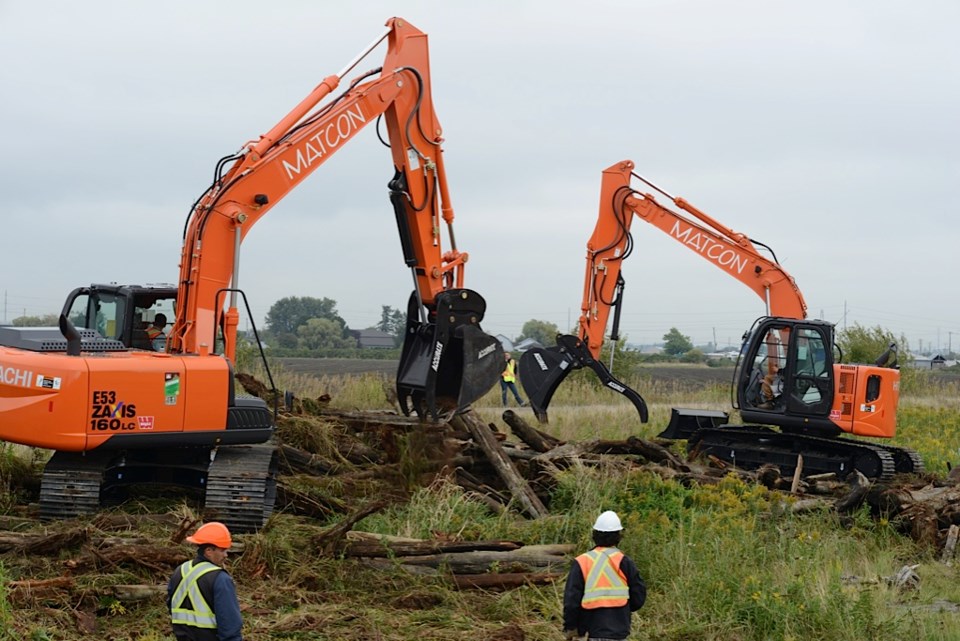Protesters were out again this week as Port Metro Vancouver continues its habitat restoration work.
A group residents opposed to the salt marsh restoration project in Boundary Bay arrived at the dike at the foot of 64th Street in Ladner at 6 a.m. Monday in an attempt to block work crews.
"We let them do their protest," said Gord Ruffo, project manager with the port authority's habitat banking program, adding that once the protesters left around 9 a.m., crews got to work.
Port Metro Vancouver is undertaking a series of habitat compensation measures in Delta in collaboration with the Department of Fisheries and Oceans (DFO) in what it calls its "habitat banking" program.
The projects in Delta include salt marsh restoration at five sites in Boundary Bay and Roberts Bank. The work includes the removal of many of the logs that have accumulated in the area, which the port maintains are suppressing growth.
"This is a good news story," Ruffo said. "We're creating large areas of habitat."
Not everyone agrees.
When work began last Tuesday, about 30 people opposed to the work made their point with a "log-in." Protesters sat on logs as crews began the work of identifying logs that should not be removed and ones that could potentially have First Nations uses.
Since then, work has continued and the protest has escalated.
"I think that we were so stunned by the level of destruction out there," Cliff Caprani of Citizens Against Port Expansion (CAPE) said Monday.
The group, along with Against Port Expansion, has been vocal in opposing the restoration work and the habitat banking program.
Against Port Expansion's Roger Emsley said last week the small quantities of wood debris increase the value of the salt marsh as they provide refuge for small mammals. The logs also provide perching areas for the birds of prey that visit the area.
He also said there was no public consultation on the project before it went ahead.
"There is absolutely no need to restore it because it's perfectly healthy," Emsley said, calling the port authority's project a farce and a waste of money. "This is a perfectly healthy environment and needs to be left well enough alone."
Port Metro Vancouver is planning to complete a series of compensation projects in order to obtain "habitat bank credits" in advance of constructing Terminal 2, a proposed three-berth container facility at Roberts Bank.
In response to the outcry against the projects, last week it released what it called a "fact sheet" on the "myths" versus "reality."
The port authority maintains there has been consultation with Delta and Tsawwassen First Nation. In the fact sheet, the port authority states: "The Boundary Bay Salt Marsh Restoration Project design and plans have been developed by professional biologists and have been reviewed by DFO, MFLNRO, Nature Trust of British Columbia and Metro Vancouver."
Ruffo said while the project has drawn criticism, the port authority is also hearing from many dike users who are in favour of the project.
The work must be complete before Sept. 30 to avoid potential conflicts with the snowy owls, which migrate to the area. Ruffo said he expects the project to be completed close to that deadline.



